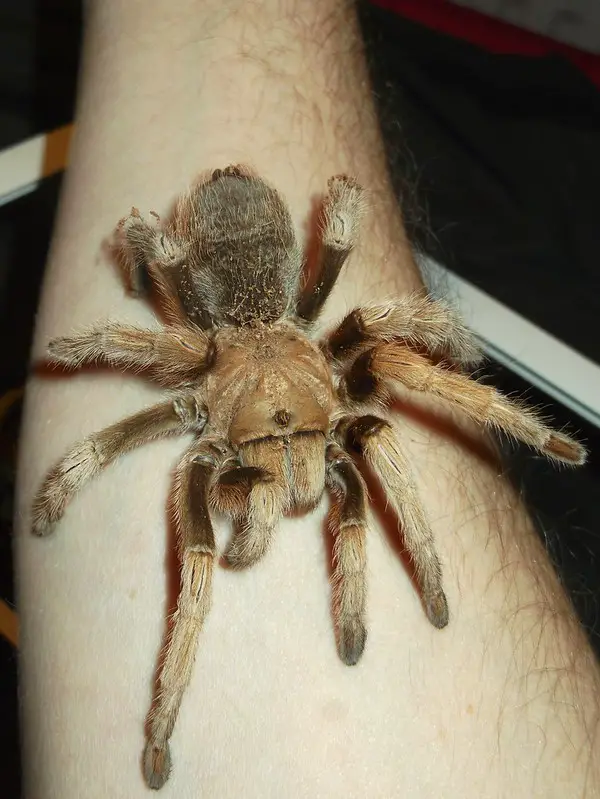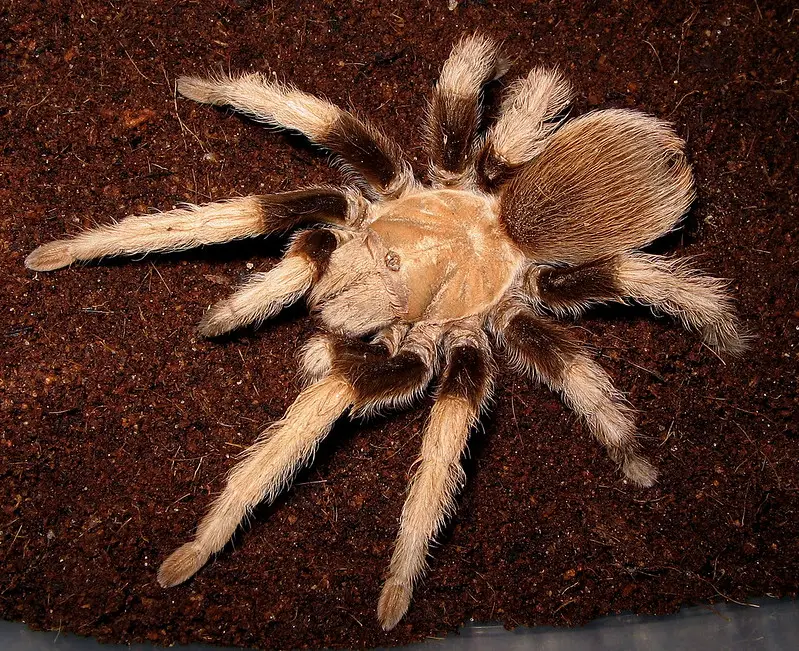Aphonopelma chalcodes is a large tarantula that is commonly known as the western desert tarantula, Arizona blond tarantula, or Mexican blond tarantula. They are found in the Southwestern states as well as in Mexico.
Despite their size, they are rarely encountered in the wild. In addition to the fact that they are very shy and usually hide away when they feel a human approaching, they also spend daytime usually well hidden under rocks.
During mating season between June to September, adult males leave their burrows in search for a female mate. During this time, most sightings of tarantulas occur in the United States.
Quick Overview: Aphonopelma chalcodes – Arizona blonde tarantula
Medically significant: No
Body size: 3 to 5 in (8 to 13 cm)
Main colors: Brown, Black, Tan
Range: Southwestern States, Mexico
Web: No web
Arizona Blonde Tarantula Spider Description
These spiders are typically large and hairy, as all other tarantulas in the United States. They have thick stocky legs covered with fine blonde hairs with the part of the leg closest to the body in a darker brown color.
Females usually have a solid tan color while males have black legs, a copper-colored carapace, and a reddish abdomen.

Tarantulas are among the longest living spiders in the world. While many species, like orbweavers only live for several months, tarantulas take years to reach adulthood. A typical male can live between 6-8 years while females can live for over 25 years.
Size
These tarantulas could grow around 3 to 5 in (8 to 13 cm).

Web
They do not spin webs, but the entrance to their burrows is covered with multiple silk threads that act as entrapment for potential prey.
Arizona Blonde Tarantula Bite
Tarantulas are very timid spiders and are hesitant to bite humans. In rare occasions, when handled or cornered and they feel threatened, they may bite. A bite can be somewhat painful due to the size of the fangs, but their venom is not medically significant. A bite can lead to symptoms similar to a bee sting after an initially stronger pain.
Studies have indicated that the venom of A. chalcodes is one of the least potent in the tarantula genus.
Aphonopelma chalcodes Scientific Classification
- Kingdom: Animalia
- Phylum: Arthropoda
- Subphylum: Chelicerata
- Class: Arachnida
- Order: Araneae
- Infraorder: Mygalomorphae
- Family: Theraphosidae
- Genus: Aphonopelma
- Species: Aphonopelma chalcodes
Other common names
These spiders are commonly known as a western desert tarantula, Arizona blond tarantula, or Mexican blond tarantula.
Distribution of the Arizona blond tarantula in the USA
The Arizona blond tarantula is found in the Southwestern United States. The largest populations are found in Southern Arizona (as its common name suggests). Less frequent sightings occur in Southeastern California, the extreme south of Nevada, Southern New Mexico and Western Texas.

Some kind of tarantula? Salt Lake City, UT. Maybe three inches long without legs and missing a leg on his left side. This is the second time I’ve seen a spider like this here.
Hello Alex, thanks for getting in touch and for uploading this great shot! This is definitely a tarantula (Aphonopelma sp.). Since many species of Aphonopelma look similar, it’s hard to make an ID on a species level. Based on the location, it might be Aphonopelma iodius.
Out on a bike ride I found this one in the street in front of my house. I thought it was a female
I think I had an Arizona blonde in my courtyard (Albuquerque, NM) but not sure. I’ve attached a photo. How do you tell the difference between the AZ Blonde and a Texas Brown? The one in the photo was alive but not moving much at all when I moved him out of our court yard, so I assuming it was a victim of a Tarantula Hawk. Also, how many eyes does an AZ blonde have I only noticed the two in the center.